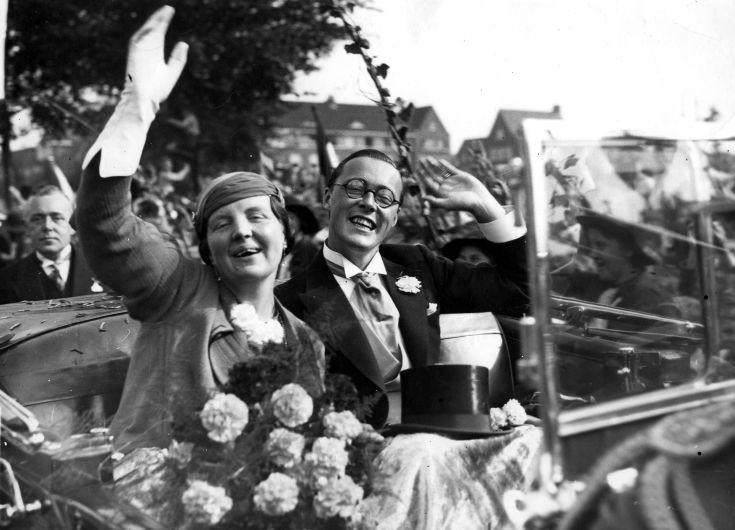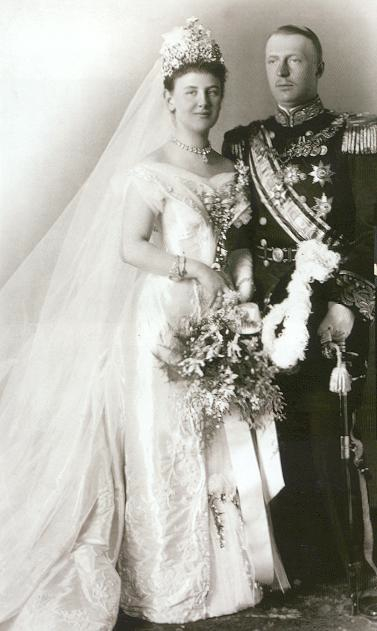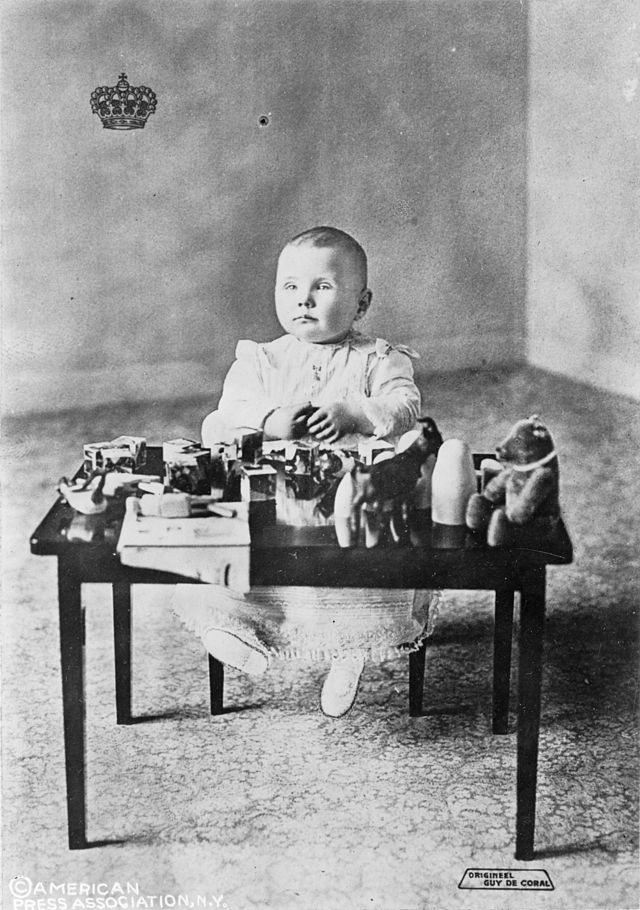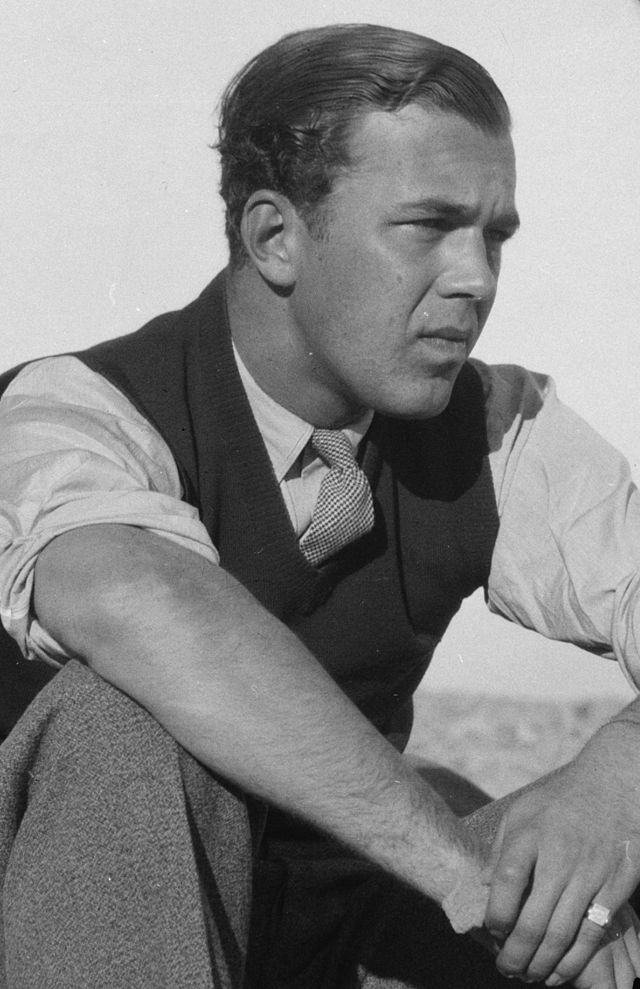by Susan Flantzer © Unofficial Royalty 2015

Maria Ana of Portugal, Grand Duchess of Luxembourg; Credit – Wikipedia
Infanta Maria Ana of Portugal was born on July 13, 1861, at Schloss Bronnbach in Bronnbach, Wertheim am Main in the Grand Duchy of Baden now in the German state of Baden-Württemberg. She was the sixth of the seven children of the deposed King Miguel I of Portugal and Adelaide of Löwenstein-Wertheim-Rosenberg.
Maria Ana’s siblings were:
- Infanta Maria das Neves (1852 – 1941), married Alfonso Carlos, Duke of San Jaime, Carlist claimant to the throne of Spain, no issue
- Infante Miguel, Duke of Braganza (1853 – 1927) married (1) Princess Elisabeth of Thurn and Taxis, had three children; (2) Princess Maria Theresa of Löwenstein-Wertheim-Rosenberg, had eight children
- Infanta Maria Theresa (1855 – 1944), third wife of Archduke Karl Ludwig of Austria, had two daughters
- Infanta Maria Josepha (1857 – 1943), second wife of Karl Theodor, Duke in Bavaria, had five children
- Infanta Adelgundes (1858 – 1946), married Prince Enrico of Bourbon-Parma, no issue
- Infanta Maria Antónia (1862 – 1959), second wife of Robert I, Duke of Parma, had twelve children
Maria Ana grew up mostly in Austria and Germany due to her father’s exile from Portugal. Despite the family’s status as ex-royalty, Maria Ana and her sisters all married well due in large part to the efforts of their mother. Ironically, before her engagement to Guillaume, Maria Ana was slated to become the bride of Protestant Alexander of Orange, the heir to the throne of the Netherlands. Alexander died before the two became officially engaged. She was also considered as a possible bride for Rudolf, the Crown Prince of Austria.
On June 21, 1893, Maria Ana married Guillaume, Hereditary Grand Duke of Luxembourg at Schloss Fischhorn in Zell am See, Austria. Guillaume was the eldest son of Adolphe, Grand Duke of Luxembourg and his second wife Adelheid-Marie of Anhalt-Dessau. Adolphe, formerly the Duke of Nassau, was the first sovereign Grand Duke of Luxembourg from the House of Nassau following Luxembourg’s break from the Netherlands in 1890. Guillaume grew up Protestant among a Catholic majority in Luxembourg. When it came time to find a bride, Guillaume searched for Catholic princesses believing a Catholic land needed a Catholic monarch and he settled on Maria Ana.
The couple had six daughters:
- Marie-Adélaïde, Grand Duchess of Luxembourg (1894 – 1924), unmarried
- Charlotte, Grand Duchess of Luxembourg (1896 – 1985), married her first cousin Prince Felix of Bourbon-Parma, a son of Maria Ana’s younger sister, had six children
- Princess Hilda (1897 – 1979), married Adolf, 10th Prince of Schwarzenberg, no issue
- Princess Antonia (1899 – 1954), second wife of Crown Prince Rupprecht of Bavaria, had six children
- Princess Elisabeth (1901 – 1950), married Prince Ludwig Philipp of Thurn and Taxis, had two children
- Princess Sophie (1902 – 1941), married Prince Ernst Heinrich of Saxony, had three children

Maria Ana and her family; Credit – Wikipedia
In 1905, Guillaume succeeded his father as Grand Duke of Luxembourg. At that time, the succession in Luxembourg was Salic, meaning a woman could not become monarch. When it became clear that Maria Ana would not have further children, Guillaume named his would-be successors the Counts of Merenburg (products of a morganatic union) to be ineligible for the throne. Marie-Adélaïde became her father’s heir, succeeding him as the first sovereign Grand Duchess of Luxembourg in 1912. She abdicated in 1919 in favor of her sister Charlotte, from whom the current Luxembourg grand ducal family descends.
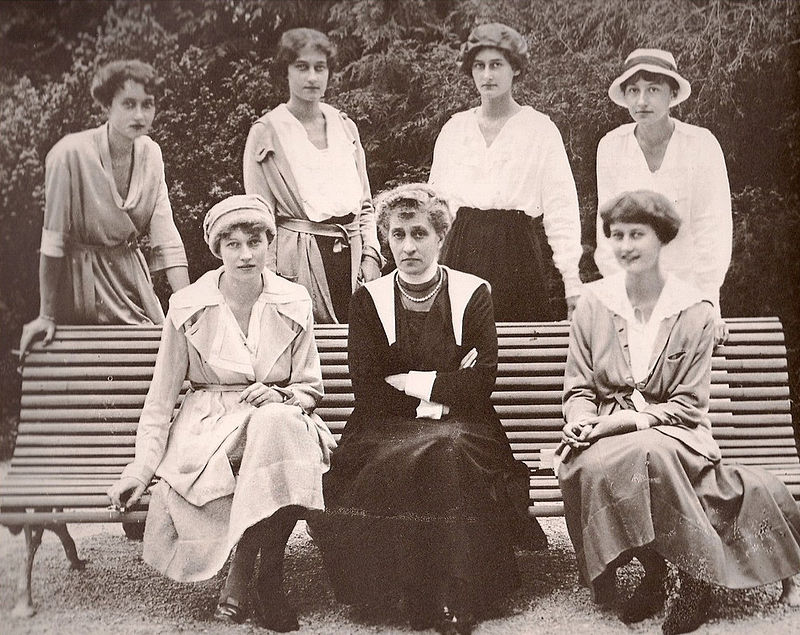
Maria Ana and her daughters in 1920; Photo Credit – Wikipedia
Maria Ana served as regent of Luxembourg for her daughter Marie-Adélaïde during Guillaume’s long illness from 1908-1912 and also served as the regent for Marie-Adélaïde during the first few months of her reign. Maria Ana fled the country with her family when the German Army invaded Luxembourg in 1940. She died in New York City on July 31, 1942, of a stomach ailment and was temporarily interred at Calvary Cemetery in Queens in New York City. Her remains were later returned to Luxembourg and buried at the Cathedral of Notre Dame in Luxembourg City, Luxembourg.
This article is the intellectual property of Unofficial Royalty and is NOT TO BE COPIED, EDITED, OR POSTED IN ANY FORM ON ANOTHER WEBSITE under any circumstances. It is permissible to use a link that directs to Unofficial Royalty.
Grand Duchy of Luxembourg Resources at Unofficial Royalty
- Grand Duchy of Luxembourg Index
- Line of Succession to the Throne of Luxembourg
- Luxembourg FAQs
- Luxembourg Orders and Honours
- Luxembourg Royal Burial Sites
- Luxembourg Royal Christenings
- Luxembourg Royal Dates
- Luxembourg Royal Residences
- Luxembourg Royal Weddings
- Profiles of the Grand Ducal Family of Luxembourg
- Rulers of Luxembourg






